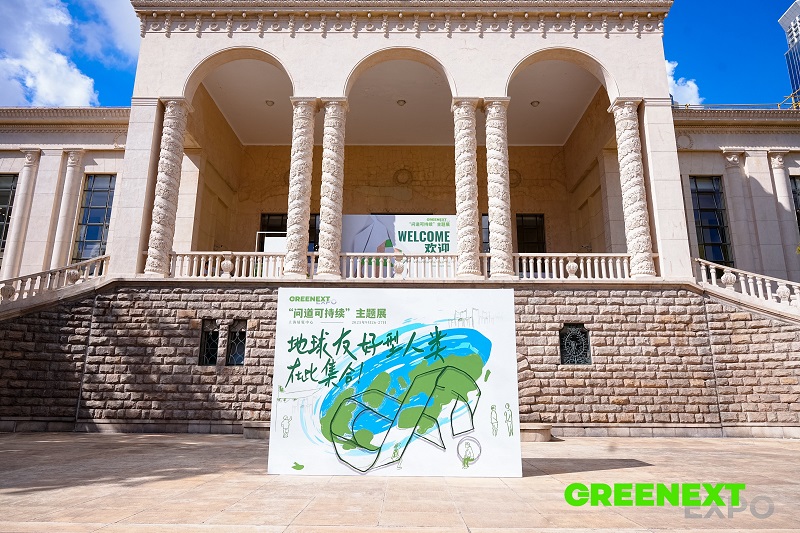FW
Moscow Fashion Week, held from August 28 to September 2, 2025, served as a powerful showcase for designers who masterfully explored the art of contradiction. The event, held in conjunction with the BRICS+ Fashion Summit, highlighted how designers from Russia and beyond are using opposing forces—fragility and strength, tradition and modernity, softness and structure—to create dynamic and compelling fashion.
From Rococo to grunge

Designers found a compelling narrative in the juxtaposition of different eras and aesthetics. Alina Vladi Brand Wear from Kazan opened its show with a dreamy Rococo theme, featuring airy silhouettes, pearl beads, and soft tones. But the collection quickly took a rebellious turn, shifting to heavy fabrics, frayed edges, and chains that channeled the spirit of grunge. This dramatic contrast reflected the duality of the modern woman, capable of embodying both elegance and a fierce, unapologetic strength.
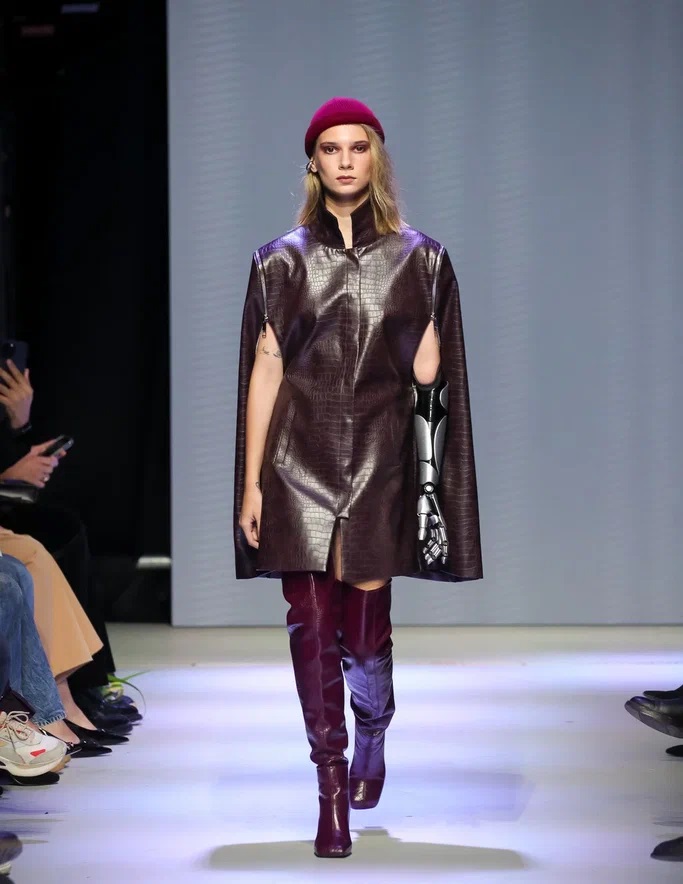
Similarly, the Addicted to... brand combined glamorous, sensational trends with a casual, everyday style, pairing luxurious fur coats with rebellious snake-print dresses and sequined suits with casual beanies.
Balancing softness and structure
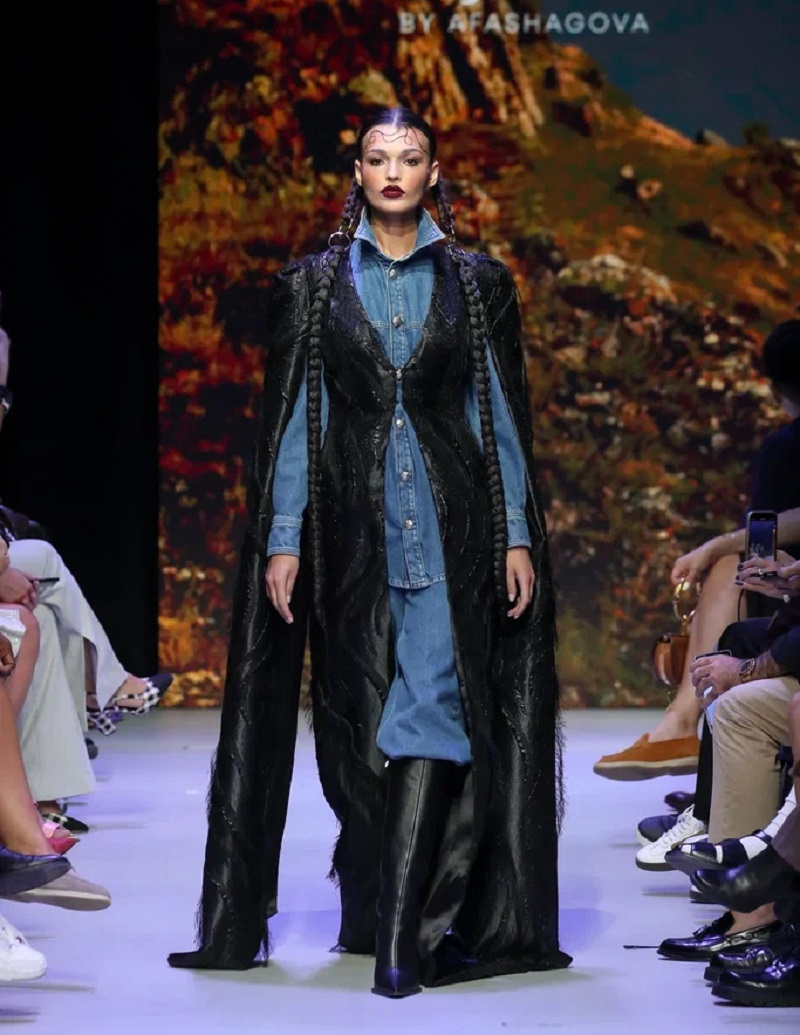
Many collections explored the tension between delicate and rigid materials to create a sense of harmony. SaiJamin, a brand rooted in Circassian heritage, used its "Threads" collection to balance bohemian softness with sharp, architectural lines. Flowing dresses were paired with structured bustiers and statement belts, creating an elegant dialogue between vulnerability and power.
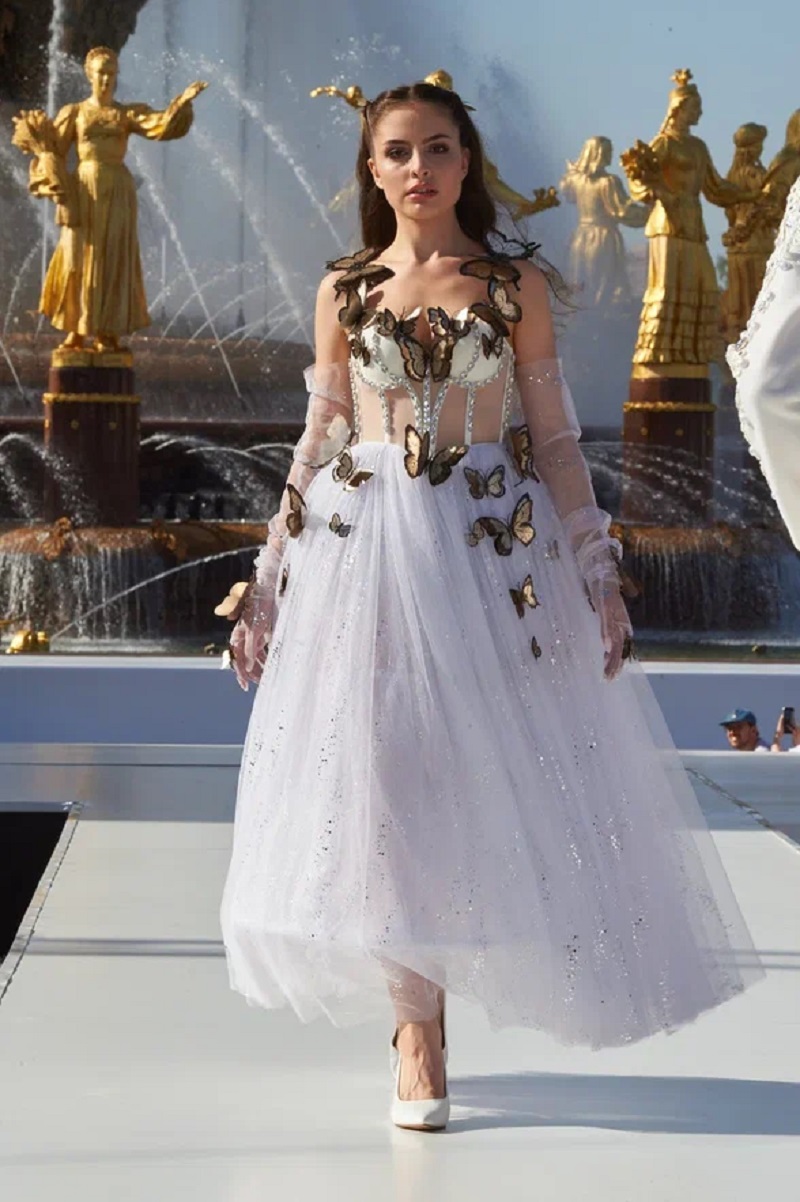
In a similar vein, Akkulova Albina wove together Slavic refinement and Caucasian elegance, using asymmetrical cuts and layered silhouettes to build architectural structure into her pieces.
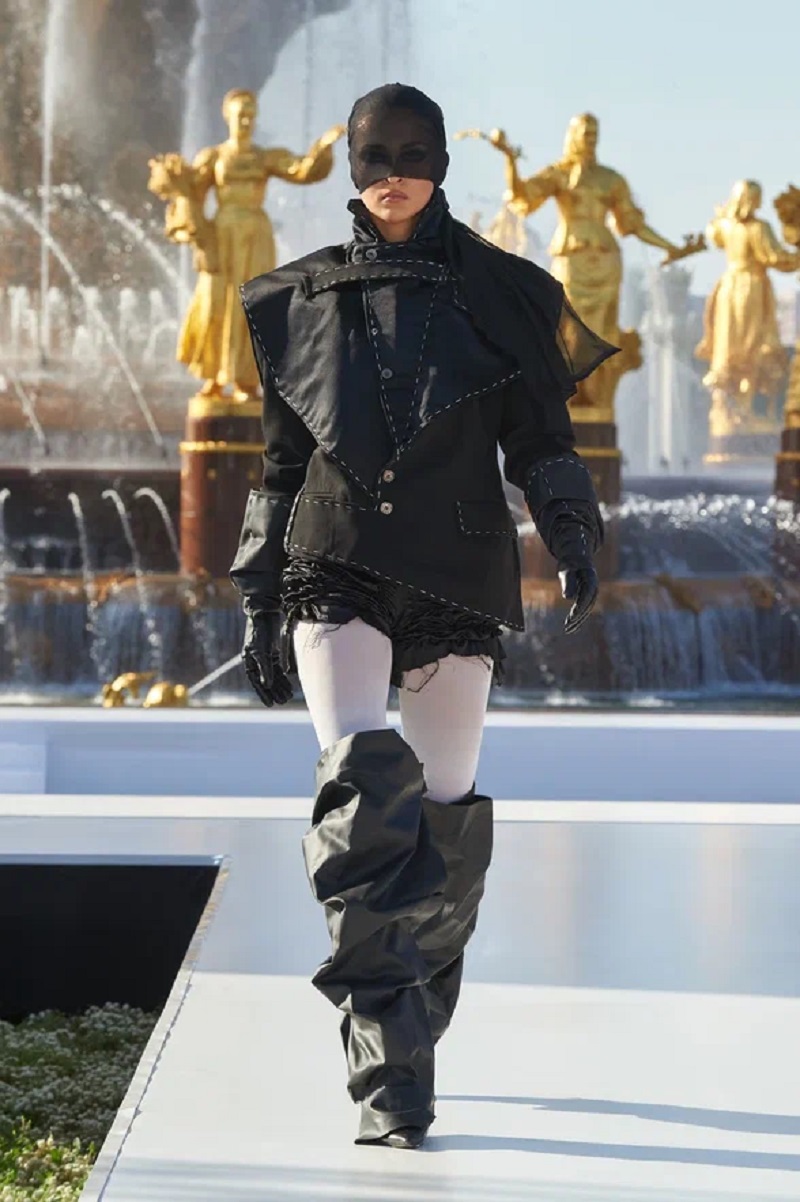
The Academy of Branding and Design METRICS focused on the interplay between contrasting textures, pairing lightweight chiffons with denser materials to create a sophisticated balance. And Alena Nega's "Bliss" collection used a similar approach, combining semi-transparent fabrics with substantial suiting materials to craft an enigmatic and compelling aesthetic. The RUBAN brand took this concept to a new level, using layers of weightless organza and chiffon to create a three-dimensional effect that was both airy and sculptural.
Timelessness Through Contrast
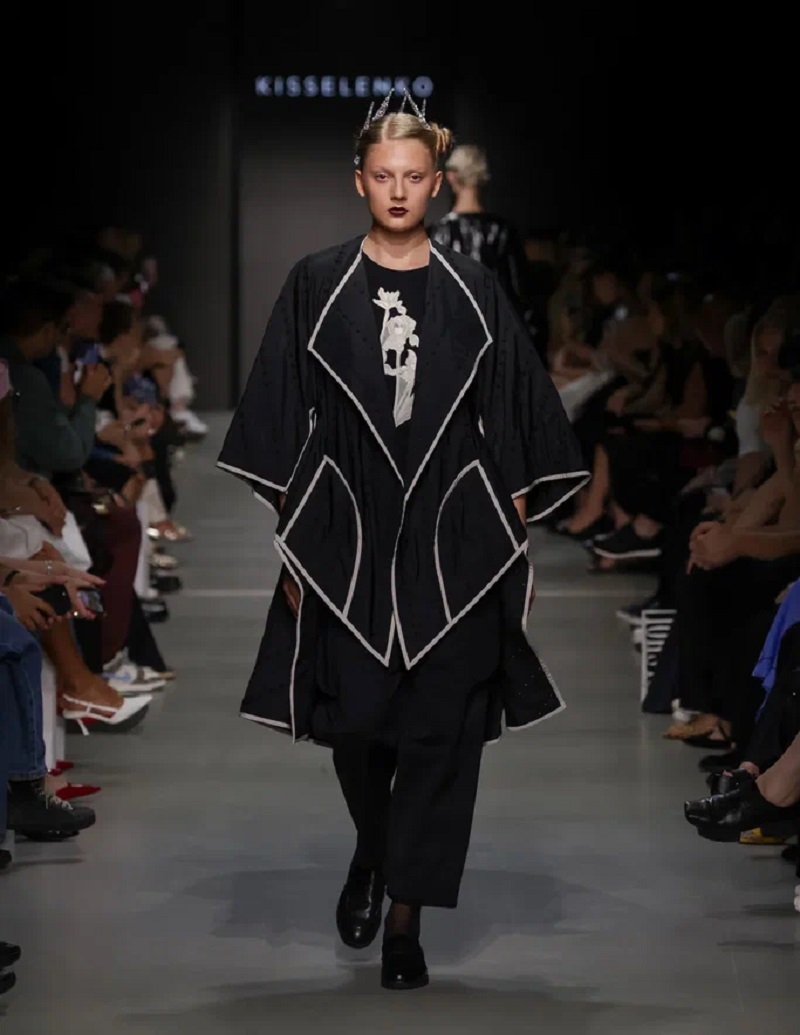
Other designers explored the tension between past and present to create collections that felt timeless. The St. Petersburg brand Kisselenko used a minimalist approach and Oriental touch, blending strict geometry with asymmetrical tailoring to create pieces that could be layered and combined in countless ways. This fusion of tradition and modernity allowed for versatile, long-lasting fashion.
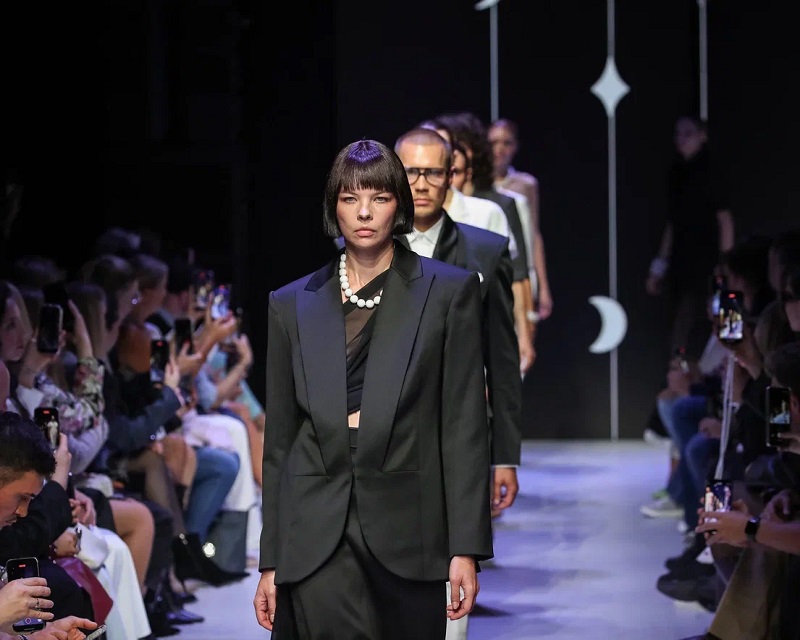
Finally, Surovaya's collection celebrated "timeless classics" rather than fleeting trends. By using a monochromatic palette and elegant, clean silhouettes, the designer proved that a focus on impeccable tailoring and quality can create a powerful statement without relying on passing fads.
Moscow Fashion Week, from August 28 to September 2, 2025, wasn't just a global hub for designers; it was a celebration of the city itself. Designers used the canvas of the runway to tell stories inspired by urban life, from the architecture of Moscow to the landscapes of other Russian cities. This creative dialogue between place and fashion showcased the distinct character of each location.
The spirit of Moscow
Moscow's own designers were deeply inspired by their home city. Brands like FLASHIN and The Vow presented collections that captured the capital's energy,

with The Vow's line in particular drawing on the elegant history of 19th-century Moscow. Other designers found inspiration in more abstract concepts of the city.
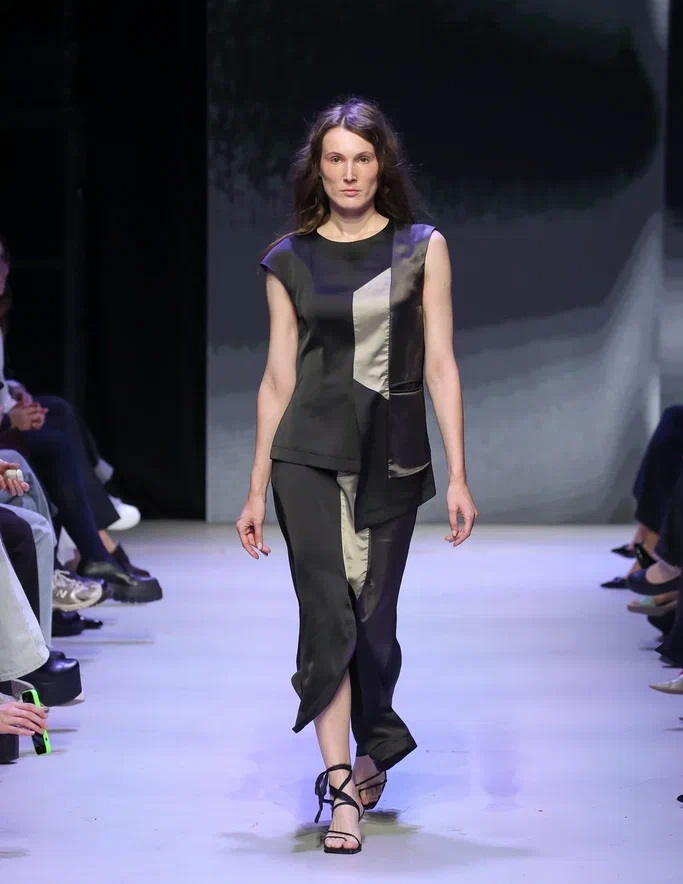
Persve explored the architectural deconstruction of Frank Gehry, translating complex structures into daring, asymmetrical ready-to-wear. Mexa Ekaterina reimagined fur for a "Big City" context, creating practical and stylish pieces for urban life. Even more personally, Sasha Barbakov's "Gardens Bloom in the Soul" was a tribute to his grandmother's garden, a quiet, nostalgic corner of Moscow brought to life through fabric prints.
Saint Petersburg's architectural elegance
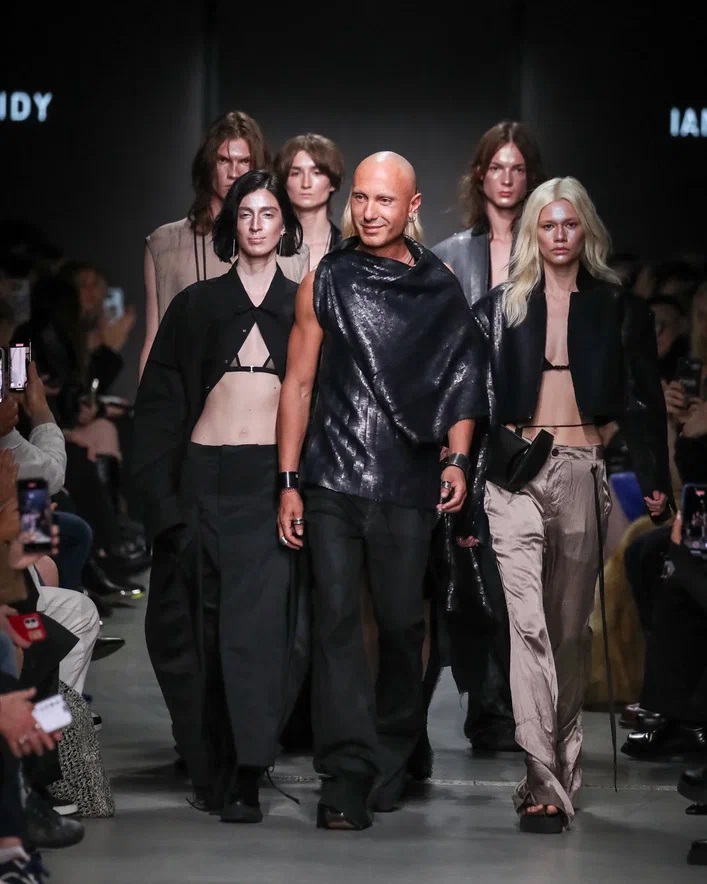
The cultural capital of Russia, St. Petersburg, also had a strong presence. Ianis Chamalidy presented a collection with "architectural tailoring," using deep, subtle tones and structured silhouettes that echoed the city's grand facades. This was a direct conversation with the urban landscape, as was the work of 139Dec, which explored the crossroads of avant-garde fashion and architecture.
Kisselenko's minimalist designs with an Oriental touch reflected the city's refined, artistic spirit,
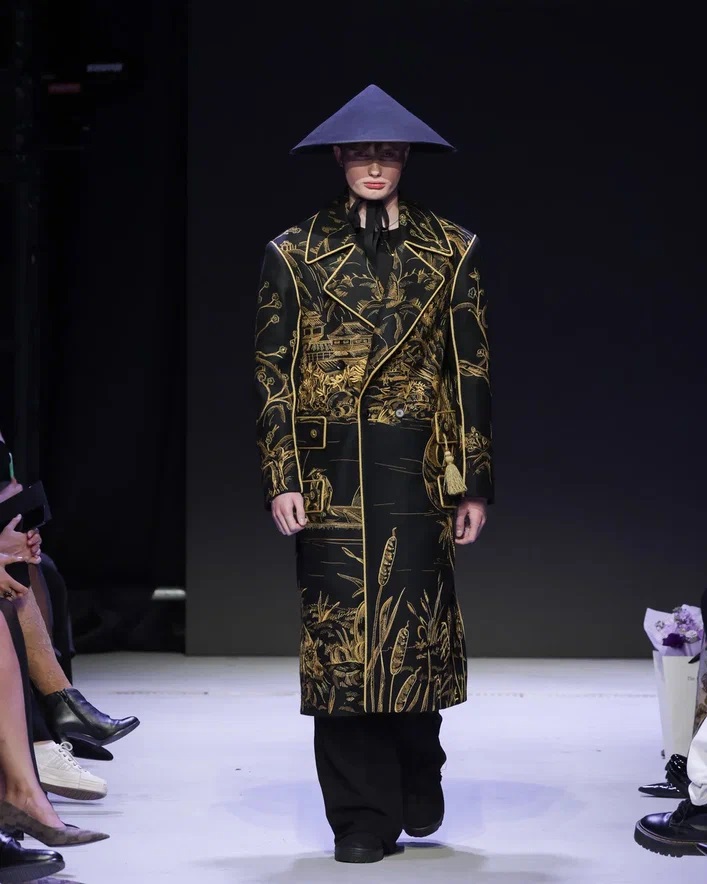
while Stas Lopatkin's chinoiserie-inspired collection offered a more ornate and theatrical vision of the city's rich history.
From the steppes to the sea
Pic-5
Designers from other Russian cities brought their regional identities to the national stage. Alina Vladi Brand Wear from Kazan played with dramatic contrasts, much like the city itself, which blends Tatar and Russian cultures.
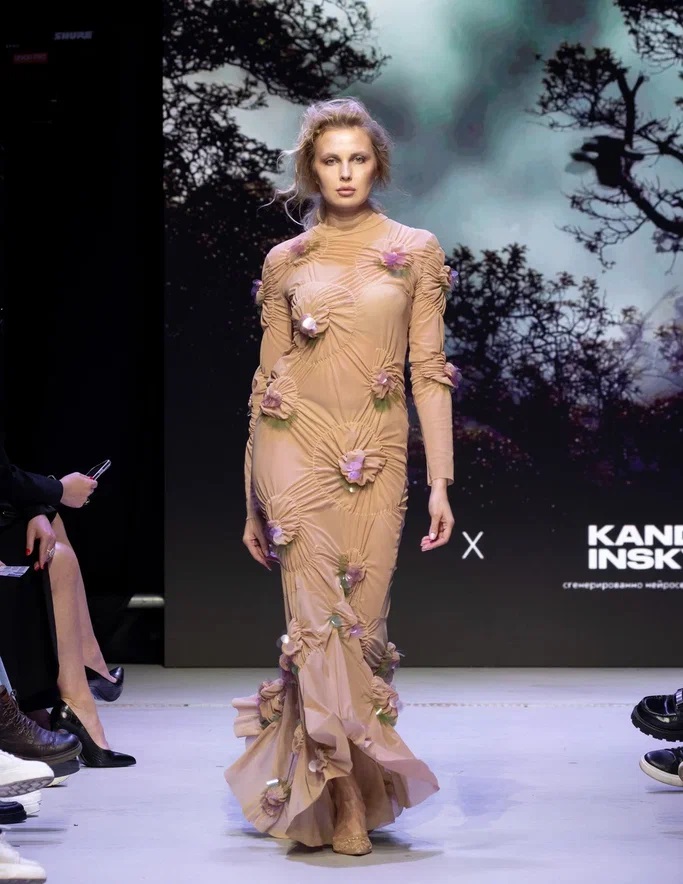
Tatiana Kotova from Chelyabinsk was inspired by a "Night Garden," and Anna Kropotova from Rostov-on-Don created sculptural silhouettes inspired by the icy formations of Siberia's Lake Baikal. Meanwhile, Les Noms from Krasnodar dedicated their collection "My Land" to the native Kuban region, telling a story of a place shaped by the intersection of many cultures.
This season, Moscow Fashion Week transcended the traditional runway, proving that a city's identity can be a powerful source of creative inspiration. Designers didn't just showcase clothes; they wove narratives of urban energy, historical elegance, and regional identity into every stitch. The event became a vibrant dialogue between fashion and place, celebrating the diverse cultural and architectural landscape of Russia and beyond.
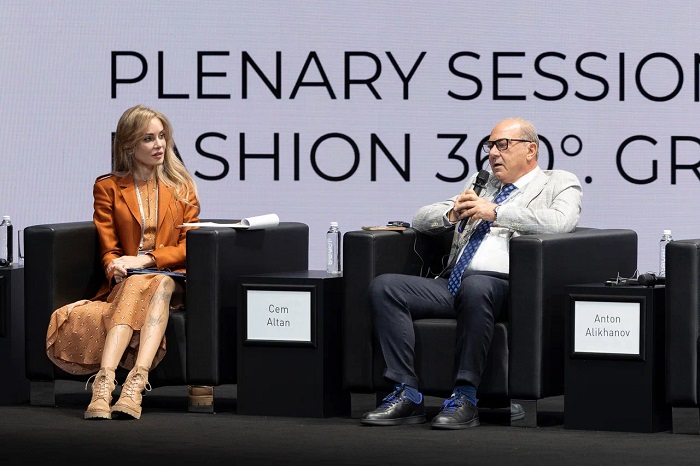
For decades, the global fashion industry has revolved around the orbits of Paris, Milan, New York, and London. But a new constellation is rising in the East, and its gravitational pull is undeniable. This shift was the central theme of the recent BRICS+ Fashion Summit in Moscow, a gathering that, in its third year, is challenging the established norms of the apparel world.
In an exclusive interview with FashionatingWorld, Cem Altan, President of the International Apparel Federation (IAF), described his attendance as a personal mission to foster connectivity—and reflected on how geopolitical shifts are unintentionally fueling the rise of a ‘non-Western’ fashion powerhouse.
Altan as a "Peace Ambassador"
While the IAF's official engagement with Russian partners is temporarily on hold due to sanctions, Altan’s personal participation as a "peace ambassador" underscores his belief that fashion can build bridges where politics erect barriers. He sees fashion as a "global attraction" and a powerful force that can bring "people together, countries together," transcending conflicts that restrict official collaboration. For him, the summit is the perfect stage for this philosophy—a place where business and cultural exchange thrive, even in a politically charged environment.
The Power of Population: A market too big to ignore
The economic and demographic reality of the BRICS+ bloc makes it impossible to overlook. With its recent expansion to 11 member countries—including Iran, Saudi Arabia, the UAE, Egypt, and Ethiopia—the group now represents roughly 42–43% of the world’s population.
"You cannot really close your eyes to this community," Altan stated emphatically. He views BRICS+ not just as a cluster of nations but as a collective power with immense potential for collaboration. With over 60 countries participating in the summit, the platform, he explained, enables "joint economical projects, cultural projects" that allow members to "help each other to grow together." This shared growth, he argues, is shaping a new and influential pole in the global fashion economy.
From Neglect to the Catwalk: A platform for new voices
One of the summit’s most compelling features, according to Altan, is its role in democratizing fashion. He expressed particular pride in the presence of designers and professionals from Africa, a community he says has been "neglected for many, many years." BRICS+ is offering them overdue visibility to showcase the "richness" of their culture and products, and to "add to the global community."
This focus on emerging and overlooked regions is central to the summit’s philosophy—an intentional effort to expand fashion’s horizons beyond traditional centers and create a more inclusive and representative dialogue.
The Traveling Summit: Building a global network
Looking ahead, Altan envisions the BRICS+ Fashion Summit evolving into a traveling event. He suggested it should rotate among BRICS nations—whether India, China, or African members—so that "local people" can directly "benefit out of it."
Such a dynamic approach would deepen cultural and economic exchanges, enabling nations to share resources, strengths, and values. For Altan, it represents a peaceful movement toward building a new kind of global network, where collaboration and respect bind the industry together.
Nurturing the next generation
While acknowledging these are "start-up deals" that take time to mature, Altan sees the summit as a vital stepping stone. It offers young designers and new entrants the chance to learn, listen, and gain experience from international experts. He called the Russian government’s support "very clever," recognizing its importance in cultivating the next generation of creative and business leaders.
A new world order in fashion and apparel
The rise of the BRICS+ bloc in fashion is not just about market size; it is about cultural exchange and the democratization of an industry historically dominated by a few. As the global economy continues to rebalance, Altan’s perspective suggests the future of fashion will be more diverse, collaborative, and far less reliant on the West.
The BRICS+ Fashion Summit, he concluded, is not just a fashion show—it is a testament to the new centers of gravity reshaping the global apparel industry.
A B2B startup, Recove has successfully closed an Rs 5.3 crore pre-seed funding round to modernize and digitize plastics recycling supply chain.
Led by Momentum Capital, the fund round was attended by several prominent industry veterans and angel investors. Some of these participants included Ganesh Natarajan. Former CEO, Aptech & Zensar; Ashish Goel, Co-founder, Urban Ladder; Chaitanya Kejriwal, and Shruti Deorah.
Recove plans to use this new capital for three main purposes including expanding its tech-enabled B2B marketplace nationwide across India, setting up in-house pre-processing hubs and growing its network of recycling partners.
Founded in 2024 by Viral Chhajer, Nirja Bhatt, and Sharan Subaiah, Recove operates a technology-enabled marketplace that efficiently connects suppliers of plastic waste with recycling companies.
The company’s model integrates digital procurement with physical pre-processing infrastructure. This combination is designed to streamline the supply chain, ensuring that recyclers receive dependable, quality-assured raw materials while maximizing returns for waste generators.
Global leader in developing fiber and technology solutions for the apparel and personal care industries, The Lycra Company announced two strategic leadership moves to accelerate innovation and growth.
The Lycra Company has promoted Robert Johnston as its new Chief Operating Officer. A 35-year veteran of The Lycra Company and its predecessor organizations, Johnston will expand his leadership to include product development, in addition to his current oversight of global manufacturing operations and IT. In his new role, Johnston will manage R&D talent, lab resources, and pilot production to drive innovation across the product portfolio, supporting strategic growth priorities identified by Kelliher’s team.
Doug Kelliher has been appointed Executive Vice President- Product. He will lead the product management team in developing and executing strategy across fibers, fabrics, and garments. His team works to deliver differentiated solutions that add value and meet the needs of today’s consumer. With more than 30 years of product leadership experience at Timberland, Velcro Companies, Polartec and Milliken & Company, Kelliher brings deep expertise to his role.
The Lycra Company innovates and produces fiber and technology solutions for the apparel and personal care industries and owns leading consumer brands.. The company focuses on adding value to its customers’ products by developing unique innovations designed to meet the consumer’s need for comfort and lasting performance.
Reiterating that the sale of imported used clothing, or ‘thrifting,’ is strictly prohibited by law, the Indonesian Government is strongly urging the public to stop purchasing such products. The crackdown comes as thrifting remains rampant, driven by strong consumer demand across various digital platforms and marketplaces.
Reni Yanita, Director General, Small, Medium, and Miscellaneous Industries at the Ministry of Industry, states, they still exist because there is demand. That's why we continue to urge the public not to buy thrifted goods."
The surge in illegal imports is severely impacting domestic businesses. Data from Statistics Indonesia shows, imports of finished textiles, used clothing, and rags reached $78.19 million between January and July 2025, marking a 17.33 per cent Y-o-Y. The main sources for these goods include China, Vietnam, Bangladesh, Taiwan, and Singapore.
Highlighting the competitive disadvantage faced by local producers, garment entrepreneur Ellianah Setiady explains, the disruption from illegal importers, especially from China, is enormous. Production costs are high due to the regional minimum wage and taxes, while imported goods are much cheaper.
Setiady notes, illegal goods are increasingly being sold on digital platforms, including through live marketplace sales and personal shopping services from abroad. These practices clearly violate regulations and pose a significant risk to the domestic industry, she emphasizes. She urged the government to protect local businesses by re-establishing a task force dedicated to monitoring illegal imports.
On September 1, 2025, amidst the imperial grandeur and contemporary dynamism of Moscow, Indian couturiers Shantnu & Nikhil Mehra unveiled their first-ever women's couture collection, 'Armouré,' at Moscow Fashion Week. For a brand synonymous with redefining menswear for over two decades, this international debut was more than a runway show—it was a bold statement of evolution, cultural diplomacy, and the paradoxical nature of the modern woman.
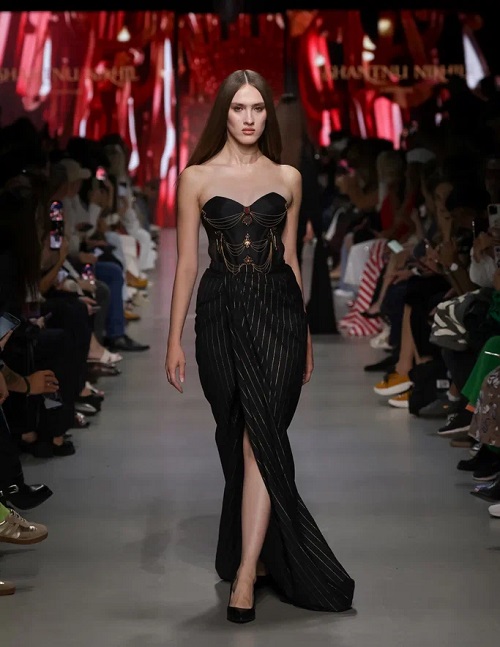
The setting couldn’t have been more fitting. Moscow, a city where ancient domes meet neon lights, perfectly mirrored the collection's core tension: a fusion of strength and sensuality, romance and resistance. The show was part of a larger global fashion dialogue, as Moscow Fashion Week ran in tandem with the BRICS+ Fashion Summit, a gathering of fashion leaders and innovators from over 65 countries. This provided a powerful platform for Shantnu & Nikhil to position Indian couture not as a niche craft, but as a central, influential voice in the global conversation. As the designers shared, “Moscow represents a cultural crossroad, steeped in imperial legacy yet brimming with contemporary appetite for couture.”
'Armouré': A symphony of paradox
Inspired by the unapologetic glamour and daring spirit of 1930s icons, the 'Armouré' collection is a masterclass in duality. It celebrates a woman who is both intimate and armored, soft yet unyielding. The silhouettes beautifully showcased this contradiction: sharp, sculptural corsets were paired with whisper-thin, fluid drapery, while structured shoulders met cascading crystal embroideries.
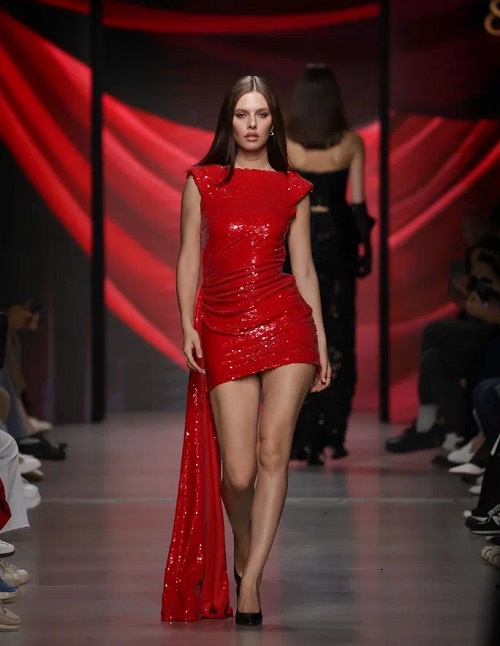
The collection’s palette deepened the narrative, moving from dominion reds and midnight blacks to liquid silvers and opulent pearls. Metallic brocades shimmered like armor, and hand-applied embellishments served as both adornment and protection. Each detail, from a pearl-studded shoulder to a sequin-clad power-bodice dress, was symbolic—a reflection of the strength and allure inherent in the modern siren.
For the designers, this collection was about more than just aesthetics. As they explained, “Armouré was imagined around the paradox of the modern woman: sensual yet armoured, intimate yet resistant.
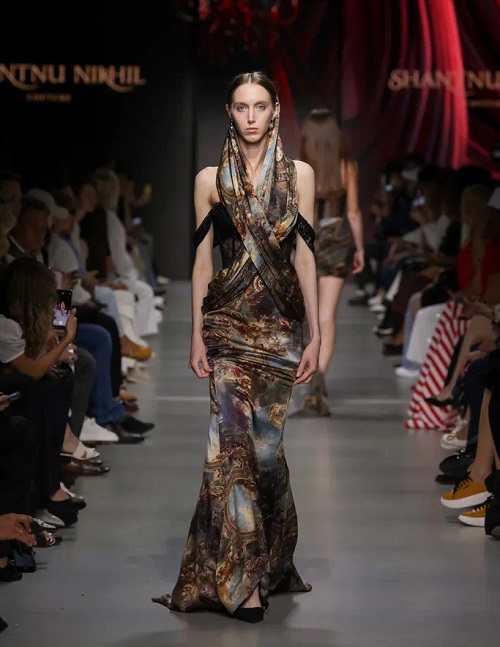
Every detail is symbolic—pearls represent intimacy, crystals embody allure, metallics signify strength, and embroideries carry the legacy of craft.” By weaving traditional Indian techniques into a global, avant-garde language, they proved that craft could be both celebrated and reimagined.
The significance of Moscow
This debut was a strategic move, positioning Shantnu & Nikhil at a pivotal cultural crossroad. As the designers noted, Moscow’s blend of imperial legacy and contemporary appetite for couture made it the ideal canvas.
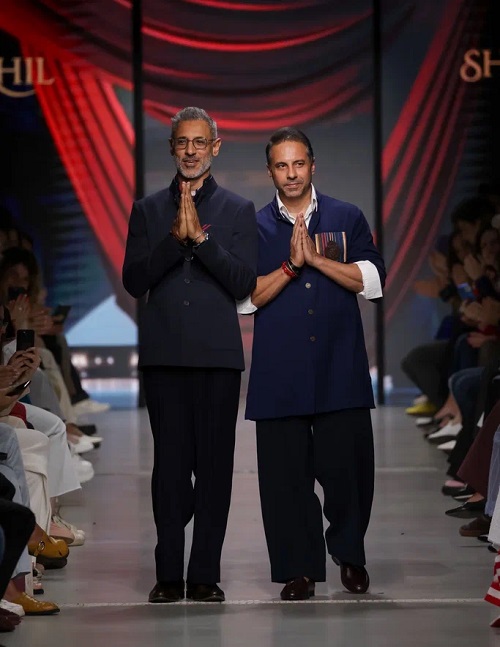
The Fashion Design Council of India (FDCI) played a crucial role in shaping this cultural bridge, championing Indian fashion on a global stage. As the designers themselves stated, “The Fashion Design Council of India (FDCI) has played a pivotal role in shaping this cultural bridge between India and Russia, the presence of Indian fashion and craftsmanship to a global audience.” Russian Federation Ambassador Denis Alipov affirmed the significance of this collaboration, highlighting how fashion can act as a form of cultural diplomacy—fostering dialogue and celebrating national identity.
The visionaries behind the brand
Brothers Shantnu and Nikhil Mehra founded their label in 2000, quickly earning a reputation for disrupting traditional Indian ceremonial wear. While many designers focused on ornate, traditional aesthetics, Shantnu & Nikhil carved a distinct niche with their rebellious, anti-trend philosophy. They introduced sharp tailoring, structured drapes, and a romantic, often theatrical, sensibility to menswear, a category that was ripe for innovation. Their designs, frequently incorporating military-inspired details and a powerful, androgynous aesthetic, have become a favorite of celebrities and discerning clients who seek modern, unconventional occasion wear.
The brand's identity is built on a foundation of paradox—marrying defiance with romance, structure with fluidity, and heritage with modernity. This signature approach was at the heart of their leap into womenswear, creating a collection that was an extension of their established codes rather than a departure.
By showcasing at Moscow Fashion Week, Shantnu & Nikhil not only launched their womenswear line but also amplified a powerful message: Indian couture is not derivative. It is an original, powerful voice that belongs at the center of the global fashion dialogue, ready to captivate the world—one bold, unforgettable look at a time.

The fashion industry has always thrived on reinvention, but its latest transformation is not being dictated by catwalks in Paris or Milan. Instead, the shift is happening in the cloud, on smartphones, and across digital platforms that are reshaping the way consumers discover, engage with, and ultimately buy fashion.
A new report from ResearchAndMarkets.com forecasts that the global e-commerce market will grow from $9.07 billion in 2025 to $16.50 billion by 2030, at 12.7 per cent CAGR. For fashion and apparel, this isn’t just growth it’s a revolution. What was once a supporting act in the retail world has now become the main stage, and the actors are e-commerce platforms, super apps, and digital-first financial solutions.
Fashion at the forefront
Fashion has emerged as one of the largest growth engines of this digital rise. Online clothing and accessory sales no longer indicate just convenience; they now embody aspiration, accessibility, and global connectivity. With digital natives, Gen Z and Millennials making up the lion’s share of online shoppers, platforms have evolved far beyond static web pages.
Today’s e-commerce solutions are full of digital ecosystems that integrate everything from live-streamed fashion shows to virtual trial rooms powered by Augmented Reality (AR) and Virtual Reality (VR). A consumer in Mumbai can try on a luxury jacket using AR filters before adding it to their cart, while a shopper in São Paulo can browse curated collections from Paris boutiques within a super app.
There are several case studies that highlight this transformation vividly. Saddleback, a premium leather brand, adopted BigCommerce to increase its online presence, achieving scalability without sacrificing customer experience. Similarly, Colombian swimwear label Agua Bendita leveraged VTEX and Stripe to seamlessly expand its international footprint. In Australia, Bulk Nutrients boosted its performance and conversions through BigCommerce upgrades, proving that speed and design are crucial for fashion e-shoppers.
Asia Pacific leads the way
While North America and Europe remain major markets, it is Asia Pacific that is expected to register the fastest growth. Increasing smartphone penetration, a digitally empowered middle class, and the meteoric rise of super apps such as Grab, Gojek, and WeChat are propelling the region forward.
India, in particular, present a fascinating case study. With its young, mobile-first population and growing appetite for fashion experimentation, the country is becoming a testing ground for digital retail innovation. Platforms like Myntra and Ajio are already using AR-powered try-on tools and AI-driven personalization engines. Meanwhile, Reliance and Tata are experimenting with super app models that integrate grocery, fashion, travel, and fintech, echoing the seamless digital ecosystems seen in China.
The power of payments
Perhaps the most transformative enabler of fashion e-commerce’s growth is how consumers pay. The Buy Now, Pay Later (BNPL) model, led by pioneers like Klarna, Afterpay, and Affirm, has democratized fashion spending.
For an industry where a single luxury purchase can cost hundreds or thousands of dollars, BNPL reduces the psychological barrier of ‘sticker shock’. By breaking payments into installments, BNPL boosts affordability while boosting average order values (AOV) by up to 50 per cent. This model resonates deeply with younger generations, who value access and flexibility over outright ownership.
At the same time, super apps are rewriting the rules of convenience. A shopper in Jakarta, for example, might order food through Grab, hail a ride, and then discover a flash sale on sneakers all within the same app. Embedded wallets, loyalty programs, and gamification ensure that fashion brands aren’t just retailers, but part of a lifestyle ecosystem.
Players behind the digital curtain
The battle to dominate this fast-growing market is fierce. Players like Shopify, Adobe Commerce, Amazon Webstore, BigCommerce, and Commercetools etc, are racing to offer brands an edge in scalability, security, and consumer experience.
Shopify Plus for example, has enabled retailers like JB Hi-Fi to handle seasonal peaks effortlessly, a lesson vital for fashion brands navigating unpredictable demand cycles. Commercetools has helped Kmart migrate to a cloud-native platform, proving that modular and flexible solutions are the future.
What’s more logistics and payments providers from DHL to PayPal form the invisible backbone, ensuring that returns, deliveries, and transactions are as seamless as browsing. This behind the scenes ecosystem is as critical as the flashy digital storefronts. Without robust logistics, secure payments, and scalable cloud solutions, fashion’s digital renaissance would remain a dream.
Balancing risk and opportunity
The digital boom is not without its shadows. Cybersecurity threats loom large, as fashion platforms often hold sensitive consumer data for personalization. Breaches could erode the very trust on which e-commerce thrives. Also, customer acquisition costs are rising, forcing brands to innovate through community-led engagement, influencer collaborations, and loyalty-driven ecosystems rather than endless discounting.
Yet the opportunities are staggering. Artificial Intelligence is refining recommendation engines to feel almost like personal stylists. AR and VR are bridging the gap between physical retail and online browsing, offering experiences once unimaginable. And as omnichannel strategies mature, the line between offline boutiques and online stores continues to blur.
Fashion’s digital renaissance
The transformation underway is nothing less than a renaissance for fashion. The runway no longer ends at the end of a catwalk it extends into a consumer’s living room via a smartphone screen. Platforms are not just tools for selling but cultural stages, where fashion identity is crafted, shared, and monetized.
As the global e-commerce platform market marches toward $16.50 billion by 2030, fashion will remain its most visible and influential driver. The industry’s embrace of digital ecosystems from BNPL to AR try-ons signals not just an adaptation to consumer demand but a reimagining of style itself.
In this new era, fashion is no longer bound by borders or boutiques. It is fluid, digital, and endlessly accessible a renaissance not of fabric and thread, but of pixels, data, and imagination.
In H1, FY26, Mothercare reported a decline in retail sales to to £80.7 million, compared to £107.7 million during the corresponding 23 weeks of FY25.
For full-year FY25, sales of Mothercare’s wordwide financial parterns to £230.6 million from £280.8 million the previous year. The brand’s adjusted EBITDA also nearly halved to £3.5 million from £6.9 million.
Their online retail sales also contracted by 24 per cent to £21.8 million during the year while total global store count decreased by 19 per cent to 372.
Mothercare, which licenses the mother-and-baby/toddler brand, attributed this continuous decline in sales to geopolitical instability and the winding down of the previous sales arrangement in the UK with Boots as reasons for this reduction.
However, despite these challenges, Mothercare believes its ‘global brand is now significantly bigger than our current business is able to extract the full value from.’ While a joint venture in India helped stabilize the balance sheet, the firm is now focused on achieving a ‘step change’ in the business, affirms Clive Whiley, Chairman. The company is accelerating discussions with several parties to monetize the operational gearing in the business by restoring critical mass, especially in the UK market, he adds.
World's first AI-powered apparel manufacturing brand, Aitu officially launched in Shanghai under the theme ‘AI Reinvents Sewing Machine.’ The global livestreamed event provided the industry with a clear look at the technological breakthroughs of AI-enabled smart apparel manufacturing, offering new solutions for the leapfrog development of the global garment sector.
Riding the wave of artificial intelligence, Aitu has pioneered significant technological advancements. These innovations have already garnered international recognition, with Aitu winning the prestigious ‘2025 IFA Artificial Intelligence Product Innovation Gold Award’ at the International Consumer Electronics Show (IFA) in Berlin, Germany.
Steven, CEO, Aitu articulates the brand’s core philosophy saying, the essence of AI is to 'master A1 robot,human experience. Driven by the goal of turning tools into partners, Aitu unveiled the world's first AI sewing equipment category.
The main highlight of the launch was the debut of the A1 robot, an autonomously developed industry's first female sewing robot. This milestone not only signifies the maturity of Aitu's AI technology but also highlights its successful real-world integration. The company has already partnered with industry leaders, including the Thailand -based NICE and Wuhan factory, with this joint innovation being pivotal in transitioning AI sewing tech from R&D to practical, large-scale use. This collaboration paves the way for the industry's new AI-coordinated development stage.
Dr Hu, Chief Product Officer, Aitu, introduces the AI10 device as a revolutionary solution designed to capture and leverage the expertise of human operators and technicians. The AI10 boasts impressive efficiencies aimed at solving common manufacturing bottlenecks. It enhances machine adjustment efficiency by 80 per cent and improves operator efficiency by 8-15 per cent, he adds.
Additionally, the device shortens training cycles for new employees by 60 per cent and provides real-time work analysis and capacity-loss warnings, helping factories achieve execution rates of over 90 per cent.



